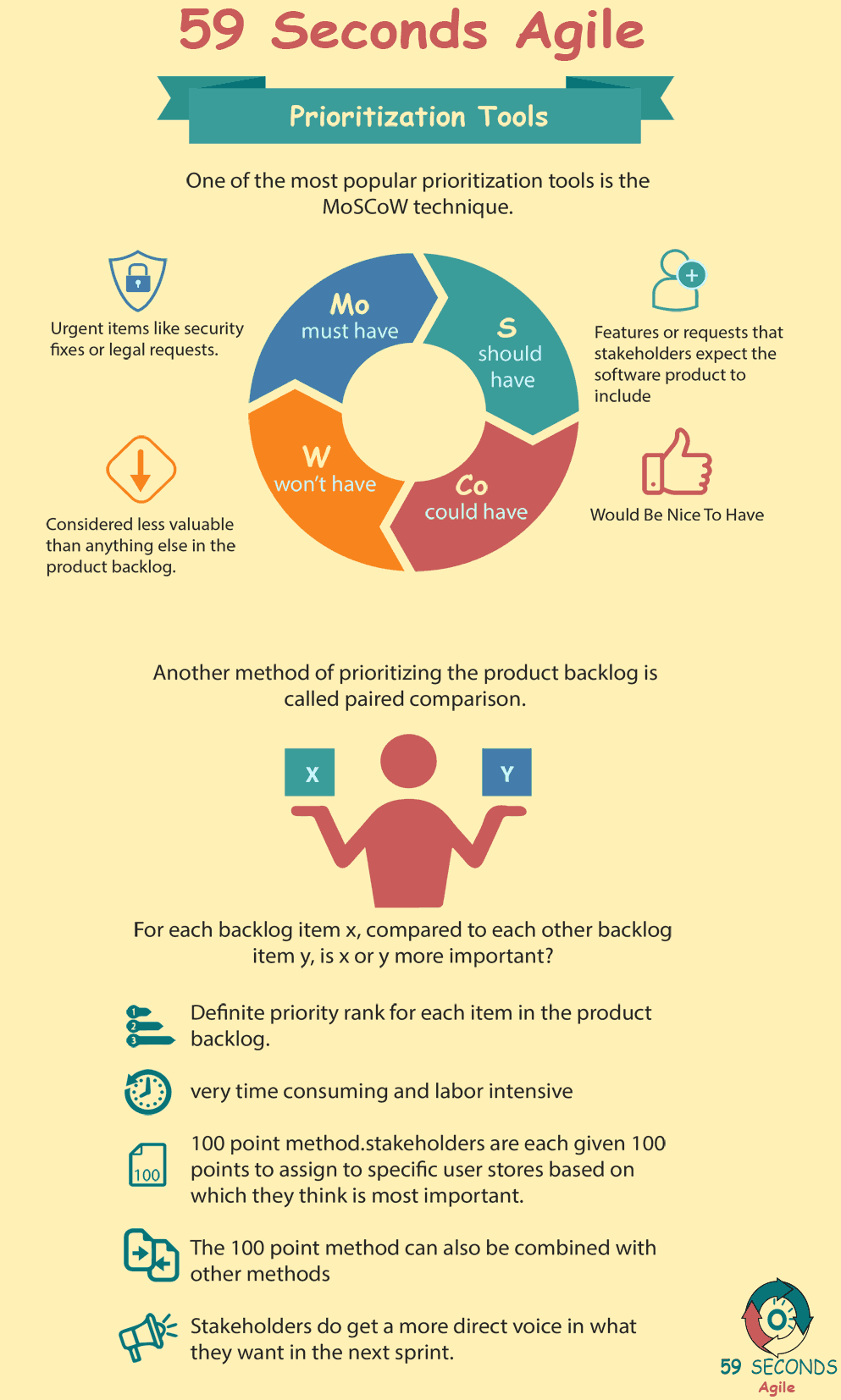What is Agile Product Backlog Prioritisation and what role do the Scrum Team play within the process? Agile Product Backlog Prioritisation consists of several elements, each element has the participation of the members of the scrum team.
Scrum Product Backlog Prioritisation
A 59 Seconds Agile Video Animation
Agile Product Backlog Prioritisation for Developers – Part 2
A 59 Seconds Agile Article
Agile Product Backlog Prioritisation: Moscow prioritization
In MoSCoW method, the name stands for ‘M’ as MUST, ‘S’ as SHOULD, ‘C’ as COULD and ‘W’ as WON’T. These categories are ordered from highest to lowest priority. All the features in the backlog are grouped under these categories. ‘MUST’ features are those that are critical to the product development. If not implemented, the release will fail. ‘SHOULD’ features are good to have them in the product but not as important as the first group.
‘COULD’ features could be included in the product but are not necessary. They are mostly small enhancement to the product not directly required by the customer. ‘WON’T’ features are low priority items that need to be revised in the next planning session and will not be included in the current release. As this method is based on the interpretation of the importance, it is a qualitative approach and more suited for small projects rather than large projects involving many customers.
Agile Product Backlog Prioritisation: Paired comparison prioritisation
In Paired-comparison method, a list of user stories is provided. Each user story is compared pairwise with the other user stories in the list. At each step, it is decided which one is more important in the pair. The more important item is scheduled ahead of the lower importance item. This pairwise comparison is done for all the user stories in the backlog.
Agile Product Backlog Prioritisation: 100 point method prioritisation
In 100-points method, each stakeholder is given a budget of 100 points to distribute among the backlog items. Any stakeholder gives more points to an item which they think is more important. The stakeholders can give different points to a specific item. The final value of the item is calculated by summing up the points given by different stakeholders. Based on this metric, the items are ordered and the highest value ones are implemented first. It is called cumulative voting as well as the votes from different stakeholders are accumulated to find the final value of the item.
Prev <— Continue Reading —> Next
Learn More: Product Backlog Prioritization
User Stories Applied
A 59 Seconds Agile Book Review
User Stories Applied by Mike Cohn is one of our favourite books on Agile User Stories. The book starts with an overview into user stories, and details what a user story is and the different aspects of them. He then discusses how to go about writing a user story, and provides details of the INVEST criteria that can be used to determine if the story is meeting all of its objectives. Next Mike gives an in depth discussion of who user stories are written for and where to begin when gathering the details for them. The book then discusses acceptance testing user stories, including how to go about specifying these criteria and the responsibilities of the development team and customers during this process.
Prev <— Continue Reading —> Next
Learn More: Product Backlog Prioritization
Scrum Product Backlog Prioritisation
A 59 Seconds Agile Infographic

Prev <— Continue Reading —> Next
Learn More: Product Backlog Prioritization
Prev <— Continue Reading —> Next
Our Favourite Agile Books
We found these books great for finding out more information on Agile Scrum:

